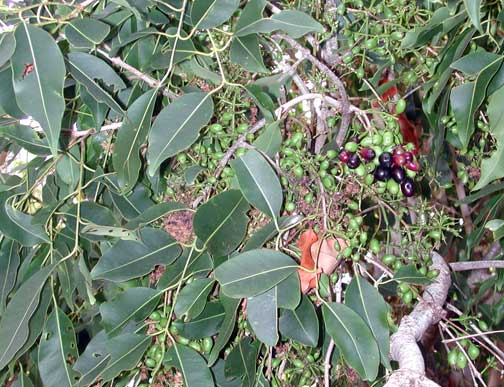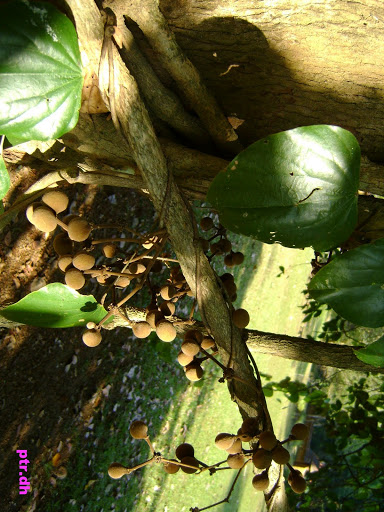
Family: MYRTACEAE
| Citation: Syzygium cumini (L.) Skeels, U. S. DA. Bur. Pl. Industr. Bull. 248: 2. 1912, var. cumini; Manilal & Sivar., Fl. Calicut 107. 1982; Mohanan, Fl. Quilon Dist. 180. 1984; Manilal, Fl. Silent Valley 104. 1988; Ramach. & V.J. Nair, Fl. Cannanore Dist. 181. 1988; Antony, Syst. Stud. Fl. Kottayam Dist. 160. 1989; Babu, Fl. Malappuram Dist. 250. 1990; Vajr., Fl. Palghat Dist. 199. 1990; M. Mohanan & Henry, Fl. Thiruvanthapuram 188. 1994; Sasidh. et al., Bot. Stud. Med. Pl. Kerala 24. 1996; Sasidh. & Sivar., Fl. Pl. Thrissur For. 181. 1996; Sasidh., Fl. Shenduruny WLS 122. 1997; Swarup. et al., Shola For. Kerala 61. 1998; Sivar. & Mathew, Fl. Nilambur 262. 1997; Sasidh., Fl. Periyar Tiger Reserve 137. 1998; Sasidh., Fl. Chinnar WLS 128. 1999; Sasidh., Fl. Parambikulam WLS 120. 2002; Mohanan & Sivad., Fl. Agasthyamala 261. 2002; Anil Kumar et al., Fl. Pathanamthitta 216. 2005; Sunil & Sivadasan, Fl. Alappuzha Dist. 287. 2009. Myrtus cumini L., Sp. Pl. 471. 1753. Eugenia jambolana Lam., Encycl. 3: 198. 1789; Hook. f., Fl. Brit. India 2: 499. 1879. Syzygium jambolanum (Lam.) DC., Prodr. 3: 259. 1828; Gamble, Fl. Pres. Madras 481(340). 1919. | |
| Malayalam Name(s): Njara, Njaval, Perinnaral, Valiyanjaval | |
| Tamil name(s): | |
| English name(s): Black plum, Jambu, Jambol, Jaman, Java plum, Naval, Neredu | |
| Description: Medium sized trees; bark white, light pink inside. Leaves to 18 x 8 cm, ovate, oblong, long-acuminate at apex, acute at base; nerves many, close, shining above; petiole 1.5-2 cm long. Panicles to 10 cm across, on leafless branchlets. Flowers 6-9 mm across, subsessile; calyx tube 3 mm broad, turbinate; filaments 7 mm long. Berry 10 x 7 mm, obovoid, deep blue. | |
| Habit: Tree | |
| Flowering & Fruiting: December-April | |
| District(s): All Districts | |
| Medicinal: Yes | |
| Habitat: Evergreen forests, also in the plains | |
| Distribution: Indo-Malesia | |
| Aquatic: No | |
| Epiphyte(s): No | |
| Saprophyte: No | |
| Stem parasite: No | |
| Root parasite: No | |
| Flower colour(s): White | |
| Weed: No | |
| Monocot/Dicot: Dicotyledonous Plants | |
| Exotic: No | |
| Garden: No | |
| Edible: Yes | |
| Vegetable: No | |
| Endemic to: | |
| IUCN status: | |
| Altitude: | |
| Localities: Sholayar, Ponmudi, Thrissur, Choodal, Olikkudy, Karimutty, Ichampetty, Vallakkadavu, Chenthamara, Umikuppan, Parambikulam, Karimala, Damsite, Kakki hills, Tirunalli, Nedumpoyil, Aralam, Nemakad, Chinnakanal, Bhavani river bank, Dhoni R. F., Karappa, Kunt |










